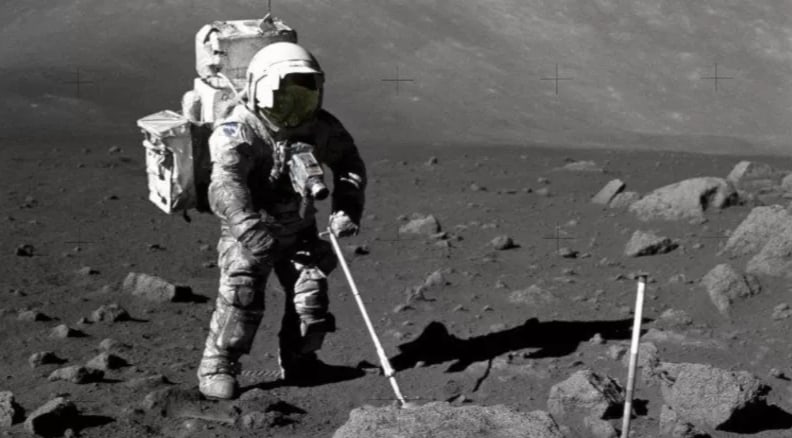
Astronauts hoping stay on the moon long-term missions have another reason to worry about moon dust: It could be quite harmful if inhaled, as demonstrated in a new study.
We’ve long known that moon dust could cause trouble. During the Apollo missions, astronauts complained of sneezing and watery eyes after tracking dust from their spacesuits back into their ships. Scientists need to take moon dust and rocks into account when designing lunar landing equipment, because it sticks to everything.
No mice or humans were sent to the moon for this new study. Instead, scientists grew both human cells and mouse cells in the lab, and exposed both to a simulated lunar dust. In both cases, the moon dust could kill the cell or damage the cells’ DNA.
“Very small particles in the breathable range or smaller can interact directly with cells,” study author Bruce Demple, a professor at the Stony Brook University School of Medicine, told Gizmodo.
Moon dust isn’t like Earth dust. Without weather or an atmosphere, the lunar soil is dry and potentially electrostatically charged, according to the paper published last month in GeoHealth. And billions of years of bombardment from meteorites and micrometeorites may have pulverized it into teeny pieces.
The research is limited since it used mock moon dust, both crushed and uncrushed—it’s hard to get your hands on the real thing. And the cells were grown in a culture, rather than inside living creatures. But this work confirms older research that suggests moon dust could be hazardous to health.
The simulated dust killed cells and altered DNA, especially right after it had been crushed up into smaller, micrometer-scale pieces. But there were surprises too: The dust’s chemical reactivity, measured in its ability to create reactive oxygen species (a kind of molecule you might call a free radical) had nothing to do with how likely it was to cause damage. Basically, it’s unclear why the dust was harmful—perhaps it had something to do with the shape of the pieces, suggested Demple.
Now that the researchers have demonstrated danger with the simulated dust, they hope they’ve made enough of a case to acquire some real lunar dust from NASA that was recovered from the Apollo missions, Demple said.
After all, if we’re going back to the moon, we should at least know what long-term exposure will do to astronauts’ health.






















